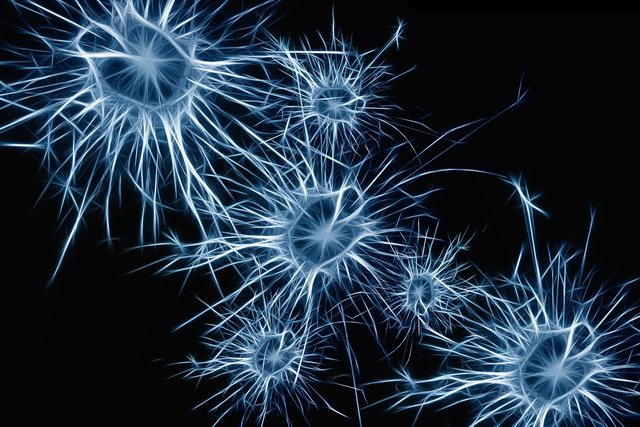Critical Review of a recently published discovery that RNA can induce an epigenetic engram (memory)
Only a week ago, one of the most remarkable scientific articles was published.
All the major media took the story and it started to spread like a wildfire.
I was drinking my morning coffee and almost jumped in the air when I read the title:
RNA from Trained Aplysia Can Induce an Epigenetic Engram for Long Term Sensitization in Untrained Aplysia
But, according to my experience, sometimes there are amazing findings, covered by all the media that turn out to be - false, just like those ones:
- Almost 1/6 Of Tardigrade DNA Is Foreign, but it was a contamination
- Or the famous "Arsenic-based DNA" that was a complete blunder

Implications *(if this is true)
If it's possible to inherit a memory via RNA it means that all the books about evolution will (probably) need a new chapter.
It also means that Lamarck was partially right. There is also a humanistic aspect because it would mean that it's possible to store a memory into the RNA. Could it be also stored in the DNA? Who knows and - why not.
How that works - I have no idea?! It's something completely new.
Let's read together and see what is certain, what seems suspicious and what could be a blunder.
Engram
The precise nature of the engram, the physical substrate of memory, remains uncertain. Here, it is reported that RNA extracted from the central nervous system of Aplysia given long-term sensitization training-induced sensitization when injected into untrained animals; furthermore, the RNA-induced sensitization, like training-induced sensitization, required DNA methylation.
Engram is still a hypothesis, it's a "storage of the memory". Maybe it's in the brain (in some group of neurons) But if it's in the RNA - that's something revolutionary new.
There are two ideas about how long-term memory could be "stored":
- the first one is classical, it's related to the alternations of the synaptic strength
- and the new one, that it's encoded by epigenetics changes. This is a very new and exciting field of study. Previously I wrote about the DNA Methylation after the exercise, so it's proven that the pumping in the gym can affect the methylation in the muscles. Who knows, maybe something similar could happen in the neurons. And we also know that RNA could be a mediator.
Keep in mind that the references for the epigenetic related memory are all post-2010.

The Experiments:
Siphon-withdrawal reflex (SWR)
For the first set of experiments, the animals were "trained" by the application of electric stimuli + mechanic stimuli that caused the Siphon-withdrawal reflex. After the animals became sensitized their RNA was extracted and injected into the untrained animals.
And there is a problem. How was the SWR measured? It's partially subjective. Was it completely retracted? Partially retracted? And if you need to translate it into the numbers - it becomes less convincing.

The actual results, it's CC4.0 so it's allowed to use the material
And now we have the first warning signs... Why are the controls so much different? Does the process of injecting the RNA (either from the trained or untrained snails) affect the behaviour? And why the error became so much larger? Is it due to the small number of used snails, or they just don't like to be poked with RNA?
Anyway, we can clearly see that after the injection of RNA from the trained snails - they seem to perform like they were trained.
Incredible, right! 1 day after the injection, they seem to become "trained". Or... They were too cold/hot, hungry, desperate, happy...
Does it work via DNA Methylation?
Well, the first Figure wasn't completely convincing but in the extended experiment included the injection of DNA methyltransferase (DNMT) inhibitor. No methylation should mean - no effect:

It's noisy again, but for me, red (after training/ after the injection of RNA) seems to be similar. Just as the pre-training looks very much like the post RNA --> but after the application of DNMT inhibitor.
Let's repeat again how remarkable this is:
- snails are trained to retract some part of their body (reflex)
- that training information is stored in their RNA
- that RNA can induce DNA methylation
- Methylated DNA is the part of the memory storage
10 years ago, this was impossible to even think about
What about the cells in culture?
Actually, it didn't work well, I quote:
A previous study of LTS in Aplysia showed that, in contrast to the effects observed in sensory neurons, in motor neurons LTS was not accompanied by a significant increase in the number of APs evoked to intracellular injection of a prolonged pulse of suprathreshold current (Cleary et al., 1998). Thus, the induction of LTS does not produce an overall increase in the excitability of motor neurons. Similarly, we observed no effect of the RNA from sensitization-trained animals on excitability-related properties of isolated motor neurons in cell culture
This is strange... The memory could be stored in the RNA, it works in the whole animal. But it doesn't work on motor neurons. Are sensory and motor neurons completely different?
They also tested the synapses in sensory neurons in cell culture - and again found no effect.
The mystery remains unsolved...
What if...
This part is my own wild speculation.
- it's known that extracellular RNA can be found in our blood
- what if it's used as the communication tool between our tissues
- what if... some of those outlaws become viruses
- could the ideas literally "spread", like a disease
- what if... we are at the doorstep of a new mechanism that shapes the evolution
- Should we live in a different way if we know that we can? change the genetic information that we are transferring to our children
It will be so exciting to see the new discoveries
Reference, only one this time...:
This journal is OpenAccess, CC4.0

Isn't the general gist of this old news? See this for instance.
I always liked to correct people by saying "oh, that's Lamarckism". I guess now I have to stop using that since he could be partially right, as you say.
It's nice that you shed a skeptical light on this.
Yes, it looks similar... It works via methylation. And as the time passes, it looks like it's a very common mechanism. The next logical step is to find all the pathways leading to it.
...it was the first lecture of the Theory of Evolution, the 5th year of my studies. The Professor asked who doesn't believe in Darwin Theory. There were several religious fanatics and - me.
we already knew that the key of life is the control of DNA. Not only "hardware", the "letters". For me, it was strange that none of those control mechanisms (developed during the life) could be inherited
and the second thing was the randomness. Not all the sequences are equally stable in thermodynamical terms. Only with that in mind, it's intuitive to think that the evolution of DNA was not (totaly) random. It also implies the finite number of posibilities that could emerge.
We will see if my intuition was good...
There's definitional aspects at work here as well, I think. Like for example what does 'random' mean? I believe in determinism, so nothing is random for me. Dawkins defines evolution as 'the non-random selection of randomly varying replicators', but I don't think he'd say 'I'm wrong' if some arrangements were proven to be more probable than others, because he'd probably say 'that's not what I meant by the word random'. Maybe.
Pretty amazing that they could transfer memories with RNA. But we will have to see if the experiments can be repeated and tested in other organisms. It kind of reminds me of the publication that showed planarians could retain its memory even after it had its head decapitated. Or even this very old report by Jame McConnell (University of Michigan) that suggested memories could be passed to planarians by feeding untrained planarians trained planarians - yes memories gained by cannibalism PDF. Amazing story, but not reproducible. Yes that is the beauty of science we can test and reproduce experimental findings.
Yeah, this experiment definitely needs to be demonstrated in a separate lab before taking it seriously. If verified it definitely would be amazing.
I remember stories about that memory cannibalism experiment that couldn't be repeated. At least it serves as a cautionary tale.
Also your wild speculation
actually holds some truths as micro RNAS (miRNAs) are enclosed in extracellular vesicles and used in cell to cell communication. Have a look at this review here
miRNA are the next big thing. Thank you for the links from the previous comment, I'll read them this evening.
P.S. write more often for STEM :)
I wish I could write more STEM posts but not enough hours in the day. Lol
Cheers!
I've read the articles - perfect. Especially the 60's style of writing. It's like a novel :D
That and the planarian experiment @rcebike has already mentioned were my first two thoughts when reading about that. I'm glad others are looking at this with a wary eye and are waiting for independent labs to replicate it.
But you see, all we care about are those little ** p-value indicators. :(
There are several indications that the whole idea could easily stay on the "promising results":
Seems really strange that a RNA could have such power to induce an epigenetic change... But in more complex beings maybe that is not true? Who knows...
But anyway, this is what science is about: Researching and reviewing to confirm what information is actually correct!
Good job!
I agree with you, it sounds crazy. But... We discovered the DNA somewhere in the second half of the XIX century. It took us half a century to realize what is the purpose of DNA. Proteins seemed to be much better candidates to store the genetic information.
Maybe we are looking at the molecular biology 2.0
Is it possible that the cunning snails just trick us? 😊
Snails cunning as weasels...
🙂
perfect ,,, i like with successful people like you. !! thanks.